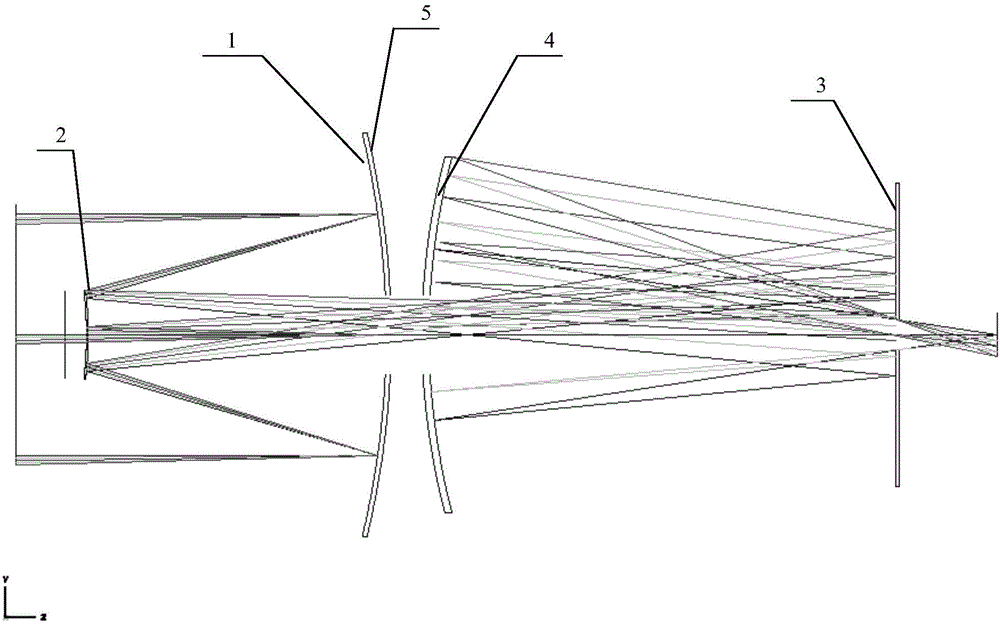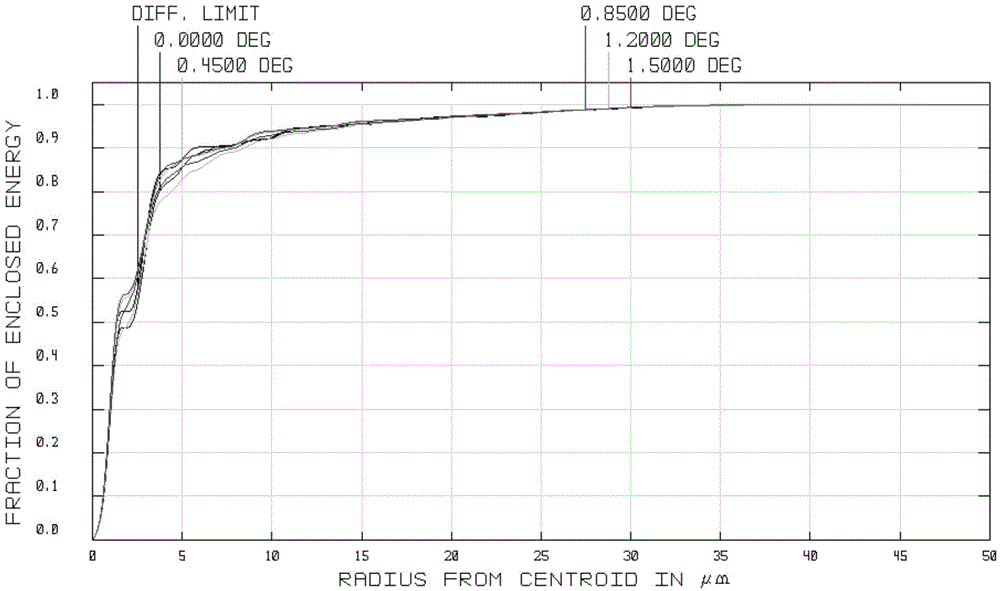All-weather star sensor optical system
An optical system and star sensor technology, applied in the field of star sensor optical systems, can solve problems such as increasing the difficulty of aberration correction in the optical system, inability to apply all-weather star sensors, and observable limit stars, etc. ratio, wide applicable spectral range and simple structure
- Summary
- Abstract
- Description
- Claims
- Application Information
AI Technical Summary
Problems solved by technology
Method used
Image
Examples
Embodiment Construction
[0032] Such as figure 1 As shown, the ultra-large aperture wide-spectrum reflective star sensor optical system of the present invention is characterized in that: it includes a first positive reflector (1) and a second negative reflector (2) whose axes are arranged in sequence on a straight line , the third plane reflector (3), the fourth regular reflector (4), and the aperture (5) is located on the first regular reflector;
[0033] The optical characteristics of the first regular mirror (1) are:
[0034] -f'1 1 >-2f' 1 , e 1 2 =-0.6, share a base SiC material with the fourth reflector (4);
[0035] The optical characteristics of the second negative reflector (2) are:
[0036] 1.5f'2 2 >-0.5f’ 2 , e 2 2 =-0.715, there will be an intermediate image after the light passes through the first positive reflector and the second negative reflector, which provides a good space for subsequent stray light elimination;
[0037] The optical characteristic of described the 3rd plane...
PUM
 Login to View More
Login to View More Abstract
Description
Claims
Application Information
 Login to View More
Login to View More - R&D
- Intellectual Property
- Life Sciences
- Materials
- Tech Scout
- Unparalleled Data Quality
- Higher Quality Content
- 60% Fewer Hallucinations
Browse by: Latest US Patents, China's latest patents, Technical Efficacy Thesaurus, Application Domain, Technology Topic, Popular Technical Reports.
© 2025 PatSnap. All rights reserved.Legal|Privacy policy|Modern Slavery Act Transparency Statement|Sitemap|About US| Contact US: help@patsnap.com


